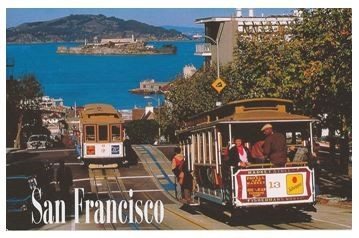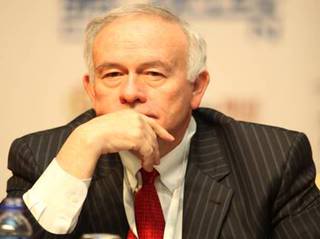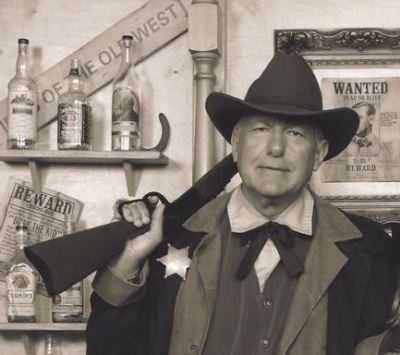
Global Market Comments
March 18, 2014
Fiat Lux
Featured Trade:
(FRIDAY APRIL 25 SAN FRANCISCO STRATEGY LUNCHEON
(ITS TIME FOR A STRATEGY CHANGE),
(SPY), (DAL), (GE), (GS), (BAC), (TLT), ($DAX),
(HOW TO TRADE CALL SPREADS IN AUSTRALIA),
(MY FAVORITE SECRET ECONOMIC INDICATOR)
SPDR S&P 500 (SPY)
Delta Air Lines Inc. (DAL)
General Electric Company (GE)
The Goldman Sachs Group, Inc. (GS)
Bank of America Corporation (BAC)
iShares 20+ Year Treasury Bond (TLT)
German DAX Composite (EOD) Deut ($DAX)
For the many Australians who recently subscribed to Mad Hedge Fund Trader PRO, a temporary regulatory obstacle has emerged.
There are two types of trading accounts permitted by Australian financial regulators:
Cash Accounts ? opened by individuals
Regulation ?T? accounts -? opened by corporations and trusts
Reg ?T? accounts have no problems executing any of my Trade Alerts, including those for stocks, bonds, exchange trade funds, options, call spreads, and put spreads. However, regulators have recently barred Cash Accounts from trading in call spreads and put spreads.
Their logic is that individuals lack the financial sophistication to engage in these types of trades. The reality is the opposite, that they are limiting individuals to engaging in higher risk positions while banning them from the lower risk ones. Welcome to the world of financial regulation!
The easy way around this is for individuals to set up a paper corporation for the purpose of handling their trading activities. This is far easier than it first appears. My friends at Halifax Investment Services will do this for you for as little at AUS$575. One swipe of your credit card and you are in business.
The benefits of doing this are huge. You can then execute every type of trade under the sun, including all of the Mad Hedge Fund Trader?s Trade Alerts. You can also reduce your tax rate from as high as 47% that hits profits in Cash Accounts to only a mere 30%. I don?t know how people in the Land Down Under view taxation, but here in the US it is absolutely despised.
Every professional trader in Australia operates through a corporate entity, and you would be mad not to do so. If the past is any guide, long-term followers of my service all have one problem in common: they make too much money, creating unforeseen tax headaches.
There is one other way to deal with the Australian regulator?s discrimination against individual investors: wait a couple months. They have been sued by a number of individuals and organizations seeking to block this double standard. My in country tax attorneys tell me that a resolution is expected soon. Once the issue is settled, the only difference between Reg T and Cash Accounts will be the tax rate.
To learn more about the special services that Halifax Investment Services Ltd. is providing readers of the Mad Hedge Fund Trader for no extra cost, please click here at http://madhedgefundradio.com/a-special-offer-for-australian-subscribers/?
To avail yourselves of these services, please open an account with Halifax Investment Services Ltd. by clicking here at??http://madhedgefundradio.com/hisl-australia/ . There, you will be asked to complete a form with your basic information. Within a few days, you should receive a phone call from a Halifax financial advisor who has been assigned to provide you assistance.
Good Luck and good trading!
 Did You Say Only a 30% Tax Rate?
Did You Say Only a 30% Tax Rate?
Global Market Comments
March 17, 2014
Fiat Lux
Featured Trade:
(FRIDAY APRIL 4 INCLINE VILLAGE, NEVADA STRATEGY LUNCHEON),
(CHARTS TO WATCH FOR AN END TO THE CRISIS),
(SPY), (TLT),(FXY), (RSX),
(GLD), (CU), (CYB), (VIX), (VXX),
(RUNNING THE SAN FRANCISCO BAY TO BREAKERS)
SPDR S&P 500 (SPY)
iShares 20+ Year Treasury Bond (TLT)
CurrencyShares Japanese Yen Trust (FXY)
Market Vectors Russia ETF (RSX)
SPDR Gold Shares (GLD)
First Trust ISE Global Copper Index (CU)
WisdomTree Chinese Yuan Strategy (CYB)
VOLATILITY S&P 500 (^VIX)
iPath S&P 500 VIX ST Futures ETN (VXX)
Global Market Comments
March 14, 2014
Fiat Lux
Featured Trade:
(ORLANDO FLORIDA SATURDAY, MAY 17 GLOBAL STRAGEGY LUNCHEON),
(CASHING IN ON THE SAUDI ARABIA OF MILK),
(ENZL),
(TAKE A RIDE IN THE NEW SHORT JUNK ETF),
(SJB), (JNK), (CORN)
iShares MSCI New Zealand Capped (ENZL)
ProShares Short High Yield (SJB)
SPDR Barclays High Yield Bond (JNK)
Teucrium Corn (CORN)
?Global Market Comments
March 13, 2014
Fiat Lux
Featured Trade:
(WHY THIS CHART IS UTTERLY MEANINGLESS),
(THE REAL ESTATE MARKET IN 2030)
(TESTIMONIAL)
Global Market Comments
March 12, 2014
Fiat Lux
Featured Trade:
(FRIDAY APRIL 25 SAN FRANCISCO STRATEGY LUNCHEON),
(WHY COPPER IS CRASHING),
(CU), (FCX),
(BREAKFAST WITH FED GOVERNOR BOB MCTEER),
Pulling the Ripcord on GM
(BAC), (GS), (GM), (AIG)
First Trust ISE Global Copper Index (CU)
Freeport-McMoRan Copper & Gold Inc. (FCX)
Bank of America Corporation (BAC)
The Goldman Sachs Group, Inc. (GS)
American International Group, Inc. (AIG)
General Motors Company (GM)
Come join me for lunch at the Mad Hedge Fund Trader?s Global Strategy Update, which I will be conducting in San Francisco on Friday, April 25, 2014. An excellent meal will be followed by a wide-ranging discussion and an extended question and answer period.
I?ll be giving you my up to date view on stocks, bonds, currencies, commodities, precious metals, and real estate. And to keep you in suspense, I?ll be throwing a few surprises out there too. Tickets are available for $179.
I?ll be arriving at 11:00 and leaving late in case anyone wants to have a one on one discussion, or just sit around and chew the fat about the financial markets.
The lunch will be held at a private club in downtown San Francisco near Union Square that will be emailed with your purchase confirmation.
I look forward to meeting you, and thank you for supporting my research. To purchase tickets for the luncheons, please go to my online store.
No one can explain the most complex economic and monetary issues in a simpler, more homespun fashion than former governor of the Federal Reserve, Bob McTeer.
He is known for carrying around two yardsticks, one slightly longer than the other, to demonstrate to your average guy the monthly changes in employment.
Bob argues that the Fed is getting a bad rap today. Ben Bernanke?s quantitative easing was neither inflationary, nor caused the collapse of the dollar. This ?money printing effort? is not actually printing any money.
The $1.7 trillion QE1 was designed to buy mortgage backed securities to bring liquidity back to the market place. QE2 enabled the purchase of a further $600 billion in Treasury securities to prevent a double dip recession. On top of this, the Treasury piled the $700 billion TARP to recapitalize the major banks. Then came QE3. All four of these programs were wildly successful.
As a result, the Fed balance sheet has grown from a pre-crash $800 billion to $3.6 trillion. Normally this would be inflationary, but it is not this time, as all of the extra money is being tied up with excess reserves at the banks.
The proof of this is that the money supply, M2, is growing at a very modest rate, barely enough to accommodate the population growth. Without the Fed programs the monetary base would have fallen off a cliff.
The challenge going forward is for the Fed to unwind its balance sheet at the same rate that the banks start paring back excess reserve through more aggressive lending. Too slow, and the Fed risks inflation. Too fast, and it risks falling back into recession.
Although it appears that the dollar is dead in the water in the foreign exchange markets, it is in fact at the same level as it was before the financial crisis. All it has really done is given back its flight to safety bid. The dollar is really a function of our international balance of payments and global interest rate differentials.? Bob feels that the next big move in the greenback is down.
McTeer points out that the Fed has been a huge cash cow for the Treasury, and ultimately, the taxpayer. QE1 and QE2 took in $120 billion in profits over the last three years. The TARP funds paid a 5% preferred dividend and brought in tens of billions of dollars in profits from the banks (GS), (BAC), General Motors (GM), and AIG (AIG).
Bob views Obama?s $900 billion stimulus package as ?an attempt to shoot a hog with a shotgun?. The big problem is that businesses view such programs as temporary and act accordingly. Permanent changes to government policies get you more bang for the buck.
Bob, 73, was probably one of the last people in Texas to use a functioning outhouse. He grew up in rural Ranger, Georgia, the son of a truck stop operator, and his first brush with the real economy was pumping gas and picking cotton.
Somehow, he scored an economics degree from the University of Georgia, and went on to work at the Federal Reserve. He was named president of the Dallas Fed in 1991, and went on to pioneer the analysis of the impact of technology on the macro economy.
Bob is simple, but he is no lightweight. Today, he serves as a chancellor of Texas A&M University, with 100,000 students.
Global Market Comments
March 11, 2014
Fiat Lux
Featured Trade:
(MAD HEDGE FUND TRADER KILLS IT WITH A 2014 12.6% RETURN),
(TLT), (SPY), (BAC), (GM), (EBAY),
(DAL), (GS), (XLV), (XLF), (GE),
(MARCH 12 GLOBAL STRATEGY WEBINAR),
(EUROPEAN STYLE HOMELAND SECURITY)
iShares 20+ Year Treasury Bond (TLT)
SPDR S&P 500 (SPY)
Bank of America Corporation (BAC)
General Motors Company (GM)
eBay Inc. (EBAY)
Delta Air Lines Inc. (DAL)
The Goldman Sachs Group, Inc. (GS)
Health Care Select Sector SPDR?? (XLV)
Financial Select Sector SPDR?? (XLF)
General Electric Company (GE)
The industry beating performance of the Mad Hedge Fund Trader?s Trade Alert Service has maintained its gob smacking pace from last year, picking up another 12.6% profit in the first ten trading weeks of 2014.
The Dow Average was up a feeble 1.4% during the same period, pegging my outperformance of the index at a stunning 11.2%. Since the beginning of 2013, I am up 80%, with a trailing 12-month return of 51%.? 2013 closed with a total return for followers of 67.45%.
The three-year return is now an amazing 135.1%, compared to a far more modest increase for the Dow Average during the same period of only 34%. That brings my averaged annualized return up to 41.6%. Not bad in this zero interest rate world. It?s better than a poke in the eye with a sharp stick.
This has been the profit since my groundbreaking trade mentoring service was launched in 2010. Thousands of followers now earn a full time living solely from my Trade Alerts, 95% of which have been profitable this year.
Not a day goes by without finding grateful emails thanking me for changing their lives. Stories abound of mortgages paid off, college educations financed, and aging parents supported. Quite a few use my award winning mentoring service to finally achieve financial independence and told their bosses to go jump off a bridge.
I won?t pass on the pictures they sent me. To read the plaudits yourself, please go to my testimonials page. They are all real.
The hot streak continues.
I managed to call the double top in the Treasury bond market (TLT), and picked up some easy money on the short side. Crucially, I was one of the first to catch the leadership change in the market, out of technology and health care (XLV) and into banks (XLF), (BAC), (GS) and autos (GM).
On top of this, I bought some long exposure in classic old-line deep cyclicals, like General Electric (GE) and (Delta Airlines (DAL). Finally, I ramped up my ?RISK ON? trading book by adding a new position in eBay (EBAY), jumping on Carl Icahn?s attempt to greenmail this spectacularly well run company (come on Carl, call a spade a spade!).
My ambitious macro view is allowing me to put the pedal to the metal on the risk side. I think that the final effect of one of the cruelest winters in history will be to shift economic growth from Q1 to Q2. That gives us every excuse to ignore every piece of bad data, and only focus on the good numbers.
This paves the way for a blowout Q2 US GDP number of over 4%. That is what the stock market is telling us now by going sideways or up almost every day.
It is a real ?heads, I win, tails, you lose? market. The indexes could continue with slow, grinding sideways ?time? corrections followed by sudden, frenetic pops to the upside all the way until the summer. My current strategy cashes in on this scenario, while also providing some downside protection so you can sleep at night.
My only loss so far this year was with some S&P 500 puts that I used to hedge downside exposure for my other long positions. We can?t all be perfect.
My esteemed colleague, Mad Day Trader Jim Parker, was no small part of this success. Since the market became technically and momentum driven, I have been confirming with him before sending out every Trade Alert. Together, our success rate is 100%.
What would you expect with a combined 85 years of market experience between the two of us? Followers are laughing all the way to the bank.
Don?t forget that Jim clocked an amazing 2013 of a staggering 374%. That is just for an eight-month year!
The coming year promises to deliver a harvest of new trading opportunities. The big driver will be a global synchronized recovery that promises to drive markets into the stratosphere in 2014.
The Trade Alerts should be coming hot and heavy. Please join me on the gravy train. You will never get a better chance than this to make money for your personal account.
Global Trading Dispatch, my highly innovative and successful trade-mentoring program, earned a net return for readers of 40.17% in 2011, 14.87% in 2012, and 67.45% in 2013.
The service includes my Trade Alert Service and my daily newsletter, the Diary of a Mad Hedge Fund Trader. You also get a real-time trading portfolio, an enormous trading idea database, and live biweekly strategy webinars. Upgrade to?Mad Hedge Fund Trader PRO?and you will also receive Jim Parker?s?Mad Day Trader?service.
To subscribe, please go to my website at www.madhedgefundtrader.com, find the ?Global Trading Dispatch? box on the right, and click on the blue ?SUBSCRIBE NOW? button.






![McTeerRobert[1]](https://madhedgefundradio.com/wp-content/uploads/2013/05/McTeerRobert1.jpg)


